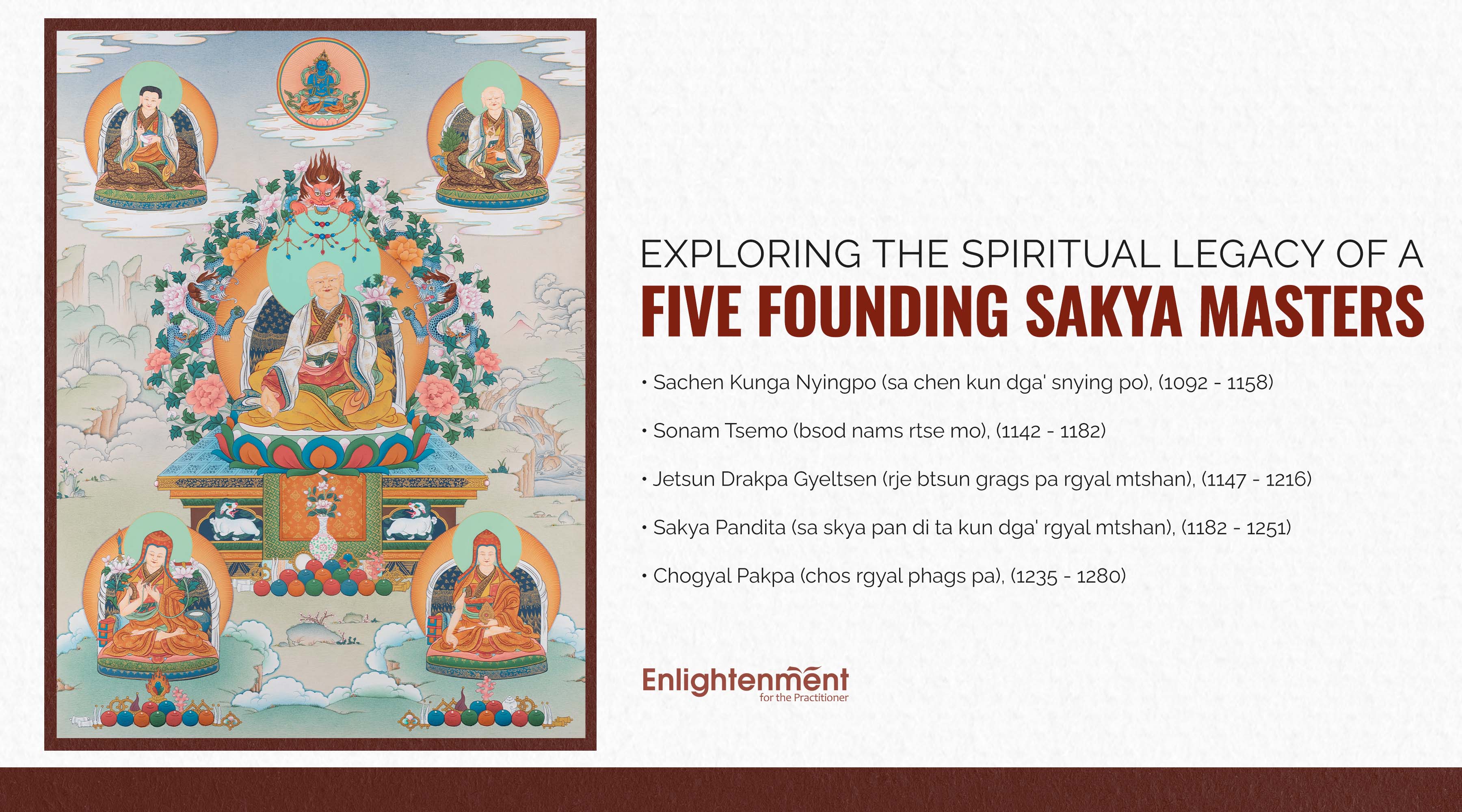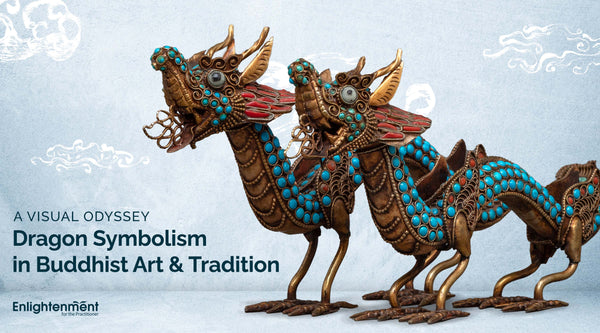Understanding the Sakya Master's Impact on Buddhist Philosophy
In Tibetan Buddhism, the Sakya Lineage is a well-known school renowned for its tantric rituals and depth of scholarship. This lineage, which has its roots at the Sakya Monastery in Tibet, is rich in philosophy.
It has developed over time thanks to the fundamental work of the "Five Founders of Sakya Lineage". These individuals significantly impacted the development and dissemination of the Sakya tradition, in addition to establishing its central precepts.
This order distinctly favors Tantrism over the textual aspects of Tibetan Buddhism, setting it apart. Although overshadowed by the prominence of the Yellow Hat and Red Hat commands, the Sakyapa Order persists today.
Key Takeaways
- The Sakya Lineage is a significant school of Tibetan Buddhism, emphasizing scholarly learning and tantric practices.
- The Five Founders are pivotal in establishing and expanding the Sakya tradition.
- Their teachings and works profoundly impact Tibetan Buddhism and the Sakya school.
The Sakya Lineage: An Overview
Historical Context and Significance
The Sakya tradition originated in Tibet in the 11th century and is well known for its all-encompassing methodology, which combines rigorous academic study with sophisticated tantric practices. It was crucial to the second wave of Buddhism's spread throughout Tibet.
"Sakya, translating to 'tawny earth' in Tibetan, embodies the essence of fallow or unploughed fields. This term also graces the identity of the school's principal monastery, referred to as 'the region of tawny earth.'
Established in 1073 CE by the eminent educator Drokmi, who extensively trained under various spiritual mentors in India, the school primarily credits Konchok Gyelpo, a disciple of Drokmi, as its founder, emphasizing his role beyond that of a monk."
Core Teachings and Practices
The Sakya school emphasizes the Path and Fruit (Lamdre) teachings, outlining a holistic path to enlightenment, and incorporates extensive tantric practices and a solid monastic tradition.
The Five Founders of Sakya Lineage
Sachen Kunga Nyingpo (1092–1158)

- Early Life and Education
Sachen Kunga Nyingpo, son of Khon Konchok Gyalpo, played a pivotal role in shaping the Sakya canon. His dedicated efforts led to the compilation of hundreds of sutras, tantras, and oral instructions, forming the foundation of Sakya teachings. Introducing the valuable Lam Dre teachings and Mahakala practice to the Sakya order, he firmly established a tradition marked by profound learning and meditation.
At the age of 12, Sachen Kunga Nyingpo engaged in 6 months of focused practice following his guru's guidance. Manjushri appeared to him during this period, imparting the renowned "Parting from the Four Attachments" in a four-line instruction.
Recognizing that these lines encapsulated the entire path of perfection, he swiftly attained realization and became an emanation of Manjushri. Remarkably, he only needed to hear a teaching once to grasp its profound meaning.
Contributions and Legacy
- Established foundational doctrines of the Sakya school.
- Emphasized the importance of the Path and Fruit teachings.
- He is known for his profound realization of the Hevajra Tantra.
| Aspect | Details |
| Birth | 1092 |
| Death | 1158 |
| Main Contribution | Foundational doctrines of Sakya |
Sonam Tsemo (1142–1182)

Philosophical Insights and Teachings
Sonam Tsemo, was renowned for his profound intellectual understanding and contributions to Sakya doctrine. In addition to being a prolific writer, he was a tantric and sutra teacher.
Loppon Sonam Tsemo, the fourth patriarch of the Sakya school succeeding Sachen Kunga Nyingpo, earned widespread acclaim for his erudition by the age of 18. Proficient in the threefold training of teaching, debate, and composition, he demonstrated mastery in both sutra and tantra, tailoring his instruction to the specific needs of each disciple. Renowned as a great scholar, he achieved the highest stage of realization through extended periods of intensive meditation.
Influence and Works
- Authored several vital texts in Tibetan Buddhism.
- Expanded the Sakya teachings beyond the monastery.
- His works on logic and philosophy are considered seminal in Tibetan Buddhist studies.
| Aspect | Details |
| Birth | 1142 |
| Death | 1182 |
| Keyword | Texts on Buddhist Philosophy |
Jetsun Dragpa Gyaltsen (1147–1216)

Expansion of the Sakya School
In Tibet, Jetsun Dragpa Gyaltsen was instrumental in extending the influence of the Sakya school. He was a skilled practitioner as well as a well-known instructor.
Jetsun Dakpa Gyaltsen, the fifth patriarch of the Sakya school, was a prolific writer, focusing on benefiting all beings, which is evident in all his compositions. A celebrated scholar, he dispelled doubts surrounding the profound view and attained high realizations. His selfless nature was reflected in his practice of offering everything he received to the gurus and the Triple Gem and aiding those in poverty.
Key Teachings and Initiatives
- Promoted the integration of tantric practices with philosophical studies.
- Established new monastic institutions and expanded the monastic curriculum.
- His teachings attracted many disciples, further spreading the Sakya influence.
| Aspect | Details |
| Birth | 1147 |
| Death | 1216 |
| Achievements | Expansion of Sakya Traditions |
Sakya Pandita Kunga Gyeltsen (1182–1251)
Scholarly Achievements and Diplomacy
The polymath Sakya Pandita did much to improve the Sakya school's standing via his academic writings and diplomatic endeavors. He was an astrology, poetry, logic, and Buddhist philosophy expert.
Sakya Pandita, the sixth patriarch, gained widespread fame for his unparalleled knowledge and scholasticism, reaching as far as Mongolia and China. His intellectual prowess allowed him to grasp the meaning of every scripture accurately, with flawless speech and faultless statements marking his communication.
Major Contributions
- He is renowned for his erudition in Buddhist philosophy and logic.
- He played a crucial role in Tibetan-Mongol relations, using his diplomatic skills to foster peace and understanding.
- His writings on logic and ethics are considered masterpieces in Tibetan literature.
| Aspect | Details |
| Birth | 1182 |
| Death | 1251 |
| Legacy | Scholarly works, diplomacy |
Chogyal Pakpa (1235–1280)

Political Influence and Religious Teachings
The youngest founder, Chogyal Pakpa, is renowned for having played a key role in making Buddhism the official religion of Tibet and Mongolia. His impact was seen in religious circles, politics, and government.
Chogyal Phakpa, the seventh throne holder and nephew of Sakya Pandita, witnessed the flourishing of the Sakya tradition during his tenure. He introduced Mahayana Buddhism to China and Mongolia, contributing significantly to its growth.
Engaging in diverse activities, including preaching the Dharma and constructing grand monasteries, Chogyal Phakpa annually ordained thousands of monks—his dedicated efforts to benefit the Buddha's doctrine and sentient beings.
Achievements and Impact
- The first Tibetan to rule over Tibet under the Mongol Empire.
- Developed the Priest-Patron relationship between Tibet and Mongolia, a model for later Tibetan leaders.
- His spiritual guidance and political acumen were instrumental in spreading Buddhism in East Asia.
| Aspect | Details |
| Birth | 1235 |
| Death | 1280 |
| Historical Role | Establishing Buddhism in Mongolia and Tibet |
The Legacy of the Five Founders
- Influence on Tibetan Buddhism
Tibetan Buddhism preserves the everlasting imprint of the Five Founders of the Sakya Lineage. The Path and Fruit, which they taught, are essential to the Sakya tradition. The Sakya school's distinctive character has been established by its blend of tantric practice with intellectual rigor.
- The Sakya Traditions of Today
With adherents and monasteries worldwide, the Sakya school, which is still an essential component of Tibetan Buddhism, is guided by the values set out by its founders. The ancestry is still strong today, honoring the contributions made by its forefathers while adjusting to new circumstances.
The Sakya Lineage's Five Founders significantly influenced the development of the Sakya school and Tibetan Buddhism as a whole. Their contributions to philosophy, religion, and politics have produced a long-lasting legacy that motivates researchers and practitioners. Because of their profound insights and teachings, the Sakya lineage is still a vibrant school of Buddhist thinking and practice.


